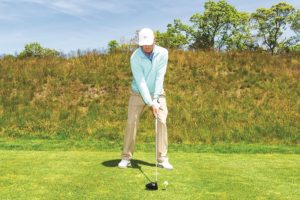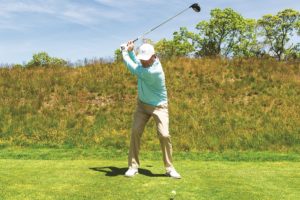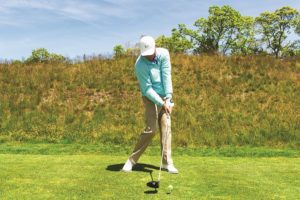The likes of PGA Tour professionals Rory McIlroy, Jon Rahm, and Cameron Champ have amateur golfers wanting to gain distance off the tee. And while these athletes have put in countless hours of practice and are gifted with the bodies and tools to produce consistency in their golf swings, the average golfer can make a few simple adjustments in his setup to send his drives longer.
According to the United States Golf Association and Royal and Ancient insight reports, the average distance off the tee for amateur golfers is around 216 yards for men and 148 yards for women. Compare that to pro distances, which range from 280 to 320 yards. You can improve your driving distance — but keep your expectations in check.
Gregg Richbourg, a PGA professional and director of instruction at the Cape Cod National Golf Club in Brewster, has simplified it to three easy-to-follow steps that should increase your confidence on the tee with the driver and pinch a few extra yards for you.
“It boils down to mindset,” says Gregg, who has been teaching for 10 years and was the 2016 Cape Cod PGA Player of the Year and 2018 Teacher of the Year. “You must resist the temptation to hit the ball harder. That only leads to tightness in the muscles, which limits mobility and causes the club to slow down into impact. Instead, focus on trying to make a larger turn on the backswing and follow through. This will provide the largest arc possible and accelerate the club properly through the ball.”

Gregg’s advice starts with the setup. The golfer should always ensure that he has a wide and balanced address position, with the trail shoulder lower than the lead shoulder — this means you are setting up for launch.

On the backswing, make a full rotation by getting the left shoulder under the chin, and, from a front-on view, the right shoulder should be completely hidden behind the head. The club, meanwhile, will hang well above the head.

It’s important to then make a full rotation through the ball. When the swing is completed, the right shoulder should be closer to the target than the left while the chest will rotate to the left of the target. All the golfer’s weight will finish on the lead leg and the right foot will be up on its toe.

Gregg demonstrates a drill where he holds the club across his chest, parallel with the ground. He makes a full turn away from the ball so that the tip of the grip is pointing down towards the ground before rotating to a high finish.
“Remember, to hit it farther, make your swing bigger, not more violent,” adds Gregg. “Grip it and rip it.”
